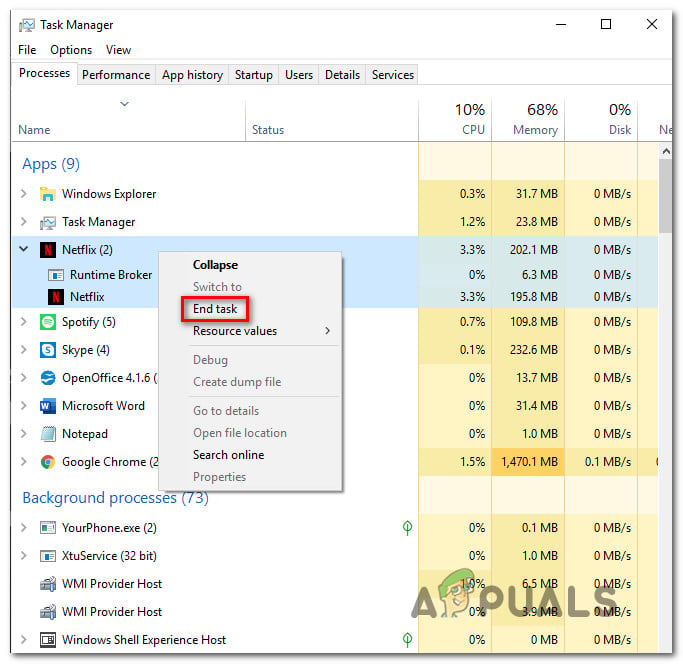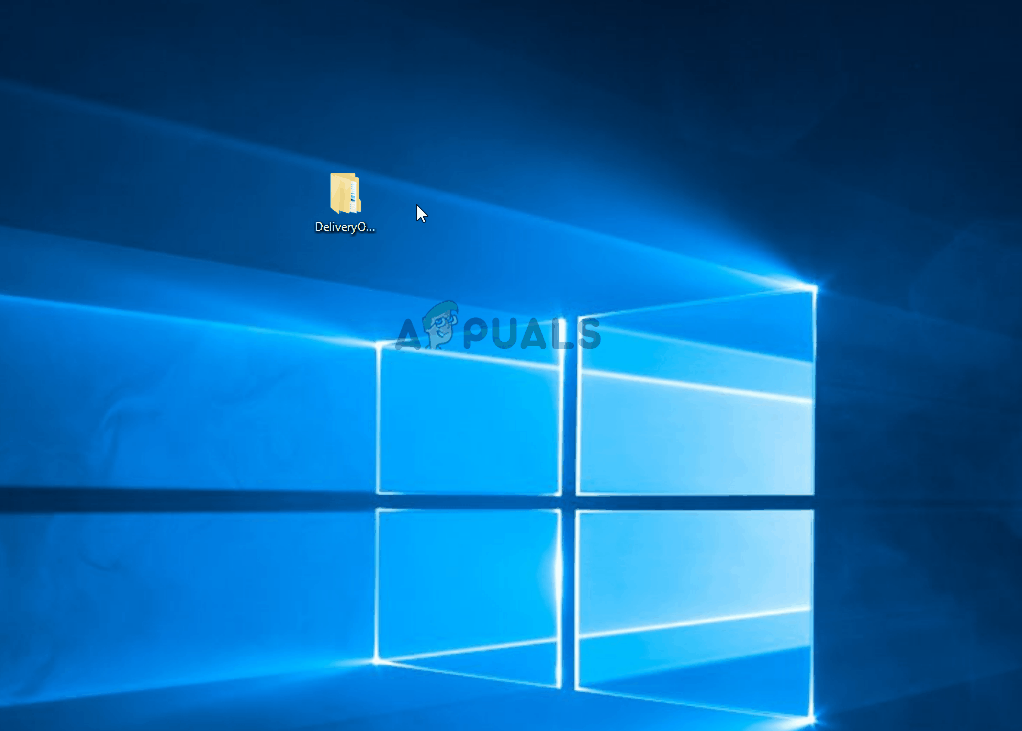Top 3 Solutions to Fix ‘Access control entry is corrupt’ Error
Several Windows users have been reaching us with questions after being unable to change the ‘owner’ in the Advanced Security Settings. Upon clicking Ok to save the changes, affected users are reporting that they see the ‘Access Control Entry is Corrupt‘ error popping up in a yellow box and the change never gets saved. The issue doesn’t seem to be exclusive to a certain Windows version as it’s confirmed to occur on Windows 7, Windows 8.1 and Windows 10.

What is causing the ‘Access Control Entry is Corrupt’ error?
We analyzed this issue by looking into various user reports and trying out different fixes that are recommended by other users after they we’re able to fix this problem. Based on our investigations, several different culprits might be responsible for this issue. Here’s a shortlist with potential scenarios that might lead to this issue:
- UWP application is interfering with permission editing – Universal Windows Platform applications are known to cause errors in instances where the user tries to edit the permissions of a Windows App folder. In this case, you can resolve the error message by closing the UWP apps that are interfering with this process.
- Folder or file has a generic owner – As it turns out, this issue can also occur in instances where the file or folder in question doesn’t have an owner. If this scenario is applicable, you will be able to resolve the issue by changing the owner to the Users group.
- System File corruption – In some rare cases, this problem can occur due to one or more system files that have become corrupted and are preventing the change from getting enforced. In this case, eliminating the logical errors and corruption issues with utilities such as DISM and SFC should allow you to fix the issue entirely.
If you’re currently looking fox fixes capable of resolving this error message, this article will provide you with several different troubleshooting steps. Down below, you’ll find a collection of repair strategies that other users in a similar scenario have used to get the problem resolved.
If you want to do things as efficiently as possible, we advise you to follow the methods below in the same order that we arranged them (by efficiency and severity). Eventually, you should stumble upon a fix that will resolve the issue regardless of the culprit that’s causing the problem.
Let’s begin!
Method 1: Closing all Windows UWP apps
As it turns out, in some cases, the issue might occur due to some UWP (Universal Windows Platform) applications or games that are running in the background and preventing the permissions from being edited.
Even if you aren’t aware of any UWP application that might be running, it’s still worth it to investigate, since Microsoft is notoriously known for automatically partnership games such as ‘Candy Crush Saga’ and the likes. Some of this will include background services that will open at every startup, without ever noticing you.
Here’s a quick guide on identifying and closing any UWP apps that might be preventing you from editing the permissions:
- Press Ctrl + Shift + Esc to open up the Task Manager.
- Inside Task Manager, select the Processes tab, then scroll down through the list of Apps and Background processes and right-click > End Task anything that is not essential to the functioning of your PC.

Ending every unnecessary task Note: Ignore the Windows Processes category.
- Once every unnecessary app and process has been closed, try to modify the permission again and see if the process is successful.
If you’re still encountering the ‘Access Control Entry is Corrupt‘ error, move down to the next method below.
Method 2: Changing the owner to Users
Perhaps the most effective fix for this particular issue is to change the Owner of the folder/file and to take full ownership of it. After doing this, you should be able to edit the permissions without encountering the ‘Access Control Entry is Corrupt‘ error.
Several affected users have confirmed that this fixes allowed them to resolve the issue indefinitely and they were able to modify the permissions without any errors after following the steps below:
- Right-click on the folder or file that you’re having issues with and choose Properties from the context menu.
- Once you’re inside the Properties screen, select the Security tab, click on the Advanced button associated with Permissions.
- Inside the Advanced Security Settings, click on the Change button associated with the Owner.
- Inside the Select User or Group, type Users inside the text box, then click on Check Names to verify. If the syntax is replaced correctly, click Ok to save the changes. Then click Apply at the previous window to make the change permanent.
- Try to modify the permissions accordingly and see if you still see the error message.

If you’re still encountering the ‘Access Control Entry is Corrupt‘ error, move down to the final method below.
Method 3: Perform DISM and SFC scans
It’s also possible that the ‘Access Control Entry is Corrupt‘ error is facilitated by a system file corruption issue. As it’s been reported by several different users, you should be able to fix this problem by using a couple of built-in utilities that are equipped to resolve logical errors and system file corruption that might be responsible for the error.
SFC (System File Checker) and DISM (Deployment Image Servicing and Management) are built-in utilities capable of dealing with this particular issue. The only difference is they do things in different ways – DISM relies on WU (Windows Update) to download healthy copies to replace corrupted files while SFC uses a locally stored archive to fetch healthy copies for the same purpose.
Since the two utilities are designed to complement each other, we advise you to run both to fix any logical errors or corruption issues that might trigger the ‘Access Control Entry is Corrupt‘ error. Here’s a quick guide on doing this:
- Open a Run dialog box by pressing Windows key + R. Next, type “cmd” inside the text box and press Ctrl + Shift + Enter to open up an elevated Command Prompt window. When you’re prompted by the User Account Control window, click Yes to grant admin access.

Running Command Prompt as an administrator - Once you’re inside the elevated Command Prompt, type the following command and hit Enter to initiate an SFC scan:
sfc /scannow
Note: Keep in mind that once this process is started, stopping it forcibly (by a restart or by closing the CMD window) exposes your machine to the risk of causing even more logical errors. So make sure you leave the machine running without interrupting through the entire scanning process.
- After the scan is finished, restart your computer and see if the issue is fixed at the next system startup by repeating the action that was previously triggering the ‘Access Control Entry is Corrupt‘ error.
- If you’re still encountering the same error message, follow step 1 again to open another elevated Command prompt, then type the following command to initiate a DISM scan:
DISM /Online /Cleanup-Image /RestoreHealth
Note: Before you initialize the DISM scan, make sure that your Internet connection is stable. It will be needed to download healthy files in case corruption is identified.
- Once the process is complete, restart your computer once again and see if the error is resolved at the next system startup.




